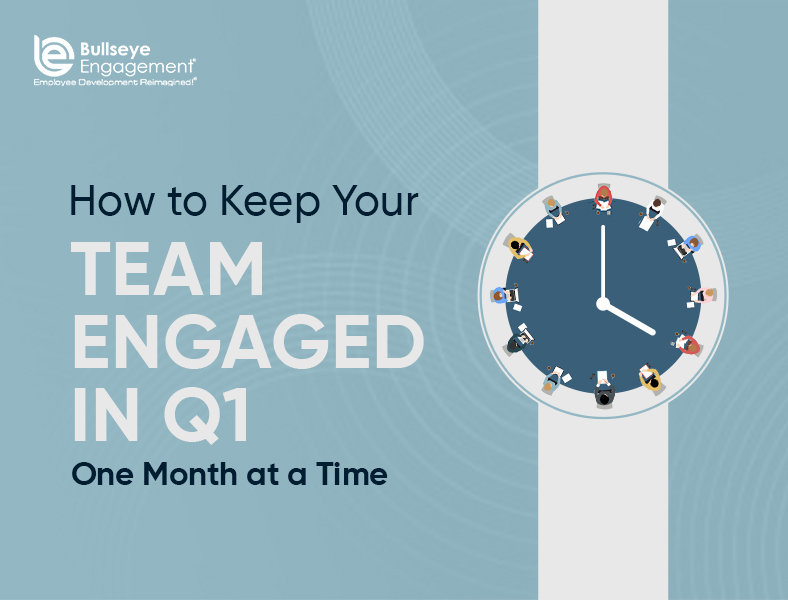Find out what Dr. Jennifer Bonilla had to say about delivering an exceptional employee experience below, or click here to listen to the full discussion.
Dr. Jennifer Bonilla holds a Ph.D. from the Iowa State University of Science and Technology with research in the area of clinician burnout, employee engagement, and turnover intention. She is a SHRM Senior Certified Professional as well as a board-certified fellow of the American College of Healthcare Executives. With 25 years of industry experience, she is well versed in driving growth, leading people, optimizing operations, solving problems, building coalitions, and delivering results.
What are the components of employee engagement and what are some of the best practices of organizational facilitators in delivering an exceptional employee experience?
Jennifer Bonilla, Ph.D. – Employee engagement is made up of a number of different factors, with the most critical being the culture of an organization. Culture stems from the brand that the company is trying to achieve and is communicated to employees through the mission, vision, and values that the organization lays out for the company.
By 2030, the majority of employees in the workforce will be millennials. Millennials are very purpose-driven and look for companies that are focused on having the right kind of culture, purpose, and mission. However nowadays, regardless of what generation employees come from, employees look for companies that have a mission that they feel aligns with their own personal beliefs.
Other factors involved in keeping engaged employees and creating an exceptional experience include the type of leadership and communication within the company. Employees want a leader that they can identify with, respect, and be inspired by. Leaders should live by the values and culture of the company. With that being said, communication is vitally important. Employers need to develop communication strategies and practices so that employees can easily engage with their work, peers, and leaders. On top of this check-in style process that a software tool can provide, easy software tools also help employees to manage their workload more efficiently.
Why is employee engagement important, and how can leaders make it a priority?
Jennifer Bonilla, Ph.D. – The 3 statuses of engagement are an engaged employee, a not engaged employee, and a disengaged employee. Across the US today, about 40% of employees are classified as engaged, 47% not engaged, and 13% disengaged. This 13% are actually working against you as they are not really behind the mission of the company.
To help you get your employees into the top category of engagement, you should ponder how you operate on a day-to-day basis. Leaders need to communicate with their workforce, give their employees meaningful work, and make sure to share with their employees how their work connects with the broader mission of the company. This will give your employees an ongoing connection and desire to be a part of more things in the company. Companies that have high levels of engaged employees have better business outcomes.
Why is it important for organizations to continue to sustain a positive employee experience, despite the current economic conditions?
Jennifer Bonilla, Ph.D. – Companies need to think about the role of employees in relation to their broader value proposition. Employees are closely watching how their companies are treating them during the pandemic, so organizations need to demonstrate greater sensitivity and empathy.
Employees want to know that their employers are doing the right things even in the toughest of circumstances. This includes making good investment decisions and being honest and transparent in their communications. When companies stay true to their values, continue to invest in their people, and deliver sustainable value to their shareholders, without making short-term decisions, they do well in the long-term.
What role does employee development play in employee engagement and overall employee experience?
Jennifer Bonilla, Ph.D. – Employee development is incredibly important because it demonstrates to employees that the company cares for them and will invest in them. Today’s employees have high expectations for how well their company will continue to invest and develop them in their current role. When a company meets these psychological expectations and invests in its employees, workers are far more likely to be engaged and much less likely to feel burned out and leave the company.
Investing in employees does not mean necessarily mean you need to put them through expensive seminars or training. It can mean investing in technology and software, providing stretch assignments for employees to experience growth through projects, and encouraging lateral moves. These methods can be much more impactful in terms of employee advancement and development.
How important is it for leaders to have real-time data to make data-driven decisions?
Jennifer Bonilla, Ph.D. – When leaders are able to support their decisions with real-time data on an ongoing basis, it makes it much easier to run their business. It saves leaders a lot of time and helps to show them where their business truly stands.
How can organizations continue to fund engagement initiatives during a time of intense cost-cutting?
Jennifer Bonilla, Ph.D. – When cost-cutting starts to occur or when you are struggling with your revenue targets, some of the projects that you have been working on could be on the chopping blocks. To counter this, make sure that you have all your data organized and ready. When your projects come into question regarding its essentialness in a cost-cutting time, you can then present your data to show its success and why its funding needs to be continued.
Bonuses and monetary rewards do not have the same effect on employees as most people think. Employees love to be recognized, whether it is an email certificate or a mere shoutout in front of their peers.
There are many emotionally charged discussions happening right now regarding equity in society and in the workplace. How does equity tie into employee engagement, and what can employers do now to be cultural leaders with respect to diversity, equity, and inclusion?
Jennifer Bonilla, Ph.D. – Before a company spends a single dollar on launching a historical assessment on discrimination and race, they need to figure out what their current state is and how they can build a plan or course correct a plan based on their current state. The best way to determine this is by talking to key stakeholders. These stakeholders can show you critical blind spots and help you to create a better action plan than if you were to evaluate your company yourself.
Leaders should be trained to understand the systemic bias in the hiring and interviewing process. With this, leaders will be better suited to develop good hiring processes as they move forward. This will then lead to having a better representation of employees, thus leading to better inclusivity in the workplace.
Even if you are doing everything right as a company, employee engagement can shift because of what is going on in the community. All things considered, having a strong corporate social responsibility stance and making sure you demonstrate that you care about what is happening in the community to have an impact, can be very important.

















